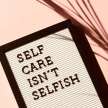Unmasking the Causes of Chronic Pain
Effective Strategies for Relief and Management

Chronic pain, an affliction that affects millions worldwide, is a complex and debilitating condition that can significantly impact one's quality of life. Unlike acute pain, which is a normal bodily response to injury or illness, chronic pain persists for extended periods, typically lasting for more than three months. Understanding the causes behind chronic pain is crucial for effective management and finding relief. In this article, we delve into the various factors that contribute to chronic pain and explore strategies to deal with this persistent discomfort.
1. Physical Causes
Chronic pain can arise from various physical conditions, such as:
a) Musculoskeletal Disorders: Conditions like arthritis, fibromyalgia, and osteoporosis can lead to persistent pain due to inflammation, tissue damage, or the degeneration of joints and muscles.
b) Nerve Damage: injuries or diseases like neuropathy, multiple sclerosis, or sciatica can result in nerve damage, causing long-lasting pain signals to be sent to the brain.
c) Post-Surgical Pain: Some individuals experience chronic pain following surgical procedures, often due to nerve damage, scar tissue formation, or failed surgeries.
d) Injuries: Traumatic injuries, such as those caused by accidents or sports-related incidents, can result in chronic pain due to lingering damage to tissues, bones, or nerves.
2. Psychological Factors
The mind-body connection plays a crucial role in chronic pain. Psychological factors that contribute to or exacerbate chronic pain include:
a) Stress and Emotional Distress: High levels of stress, anxiety, depression, or unresolved emotional issues can amplify pain perception, making it more challenging to manage.
b) Catastrophic Thinking: Negative thought patterns and catastrophic thinking, where one expects the worst outcomes, can intensify the experience of pain and hinder recovery.
c) Trauma and PTSD: Individuals who have experienced traumatic events, including physical or emotional abuse, may develop chronic pain as a result of the long-lasting impact on their nervous system and overall well-being.
3. Lifestyle and Environmental Factors
Certain lifestyle choices and environmental factors can influence chronic pain:
a) Sedentary Lifestyle: Lack of physical activity and poor posture can lead to muscular imbalances, weakening the support structure of the body and contributing to chronic pain.
b) Obesity: Carrying excess weight places additional stress on joints and can exacerbate pain in conditions like arthritis or back pain.
c) Environmental Toxins: Exposure to pollutants, chemicals, or allergens in the environment can trigger chronic pain or worsen existing conditions in sensitive individuals.
Strategies to Deal with Chronic Pain
1. Multidisciplinary Approach
Looking for a multidisciplinary way to deal with ongoing torment the executives is urgent. Consult with healthcare professionals such as doctors, physical therapists, psychologists, and pain specialists to develop an individualized treatment plan.
2. Medications and Treatments
Various medications, including over-the-counter pain relievers, prescription medications, nerve blockers, or anti-inflammatory drugs, may provide temporary relief. Additionally, treatments such as physical therapy, acupuncture, chiropractic care, or transcutaneous electrical nerve stimulation (TENS) can also alleviate pain.
3. Lifestyle Modifications
Adopting a healthy lifestyle can positively impact chronic pain:
a) Regular Exercise: Engage in low-impact exercises, stretching, and strength training to improve flexibility, strengthen muscles, and alleviate pain.
b) Balanced Diet: Maintain a nutritious diet rich in fruits, vegetables, whole grains, and lean proteins to promote overall health and manage weight effectively.
c) Stress Management: Practice stress-reducing techniques like meditation, deep breathing exercises, or mindfulness to alleviate psychological factors contributing to pain.
4. Psychological Support
Psychological interventions play a significant role in managing chronic pain:
a) Cognitive Behavioral Therapy (CBT): CBT focuses on identifying and modifying negative thought patterns and behaviors associated with pain. It helps individuals develop coping mechanisms, relaxation techniques, and problem-solving skills to better manage pain.
b) Mindfulness-Based Stress Reduction (MBSR): MBSR combines meditation, yoga, and mindfulness techniques to increase awareness of the present moment and promote acceptance, reducing pain perception and emotional distress.
c) Support Groups and Counseling: Joining support groups or seeking individual counseling can provide a safe space to share experiences, gain support, and learn from others facing similar challenges.
5. Alternative Therapies
Several alternative therapies may offer additional relief:
a) Massage Therapy: Massage can help relax muscles, improve blood circulation, and alleviate pain in specific areas of the body.
b) Acupuncture: This ancient practice involves the insertion of thin needles into specific points on the body to balance energy flow, promoting pain relief and overall well-being.
c) Herbal Remedies: Some herbal supplements, such as turmeric, ginger, or devil's claw, have shown anti-inflammatory properties and may provide natural pain relief. However, it's essential to consult with a healthcare professional before incorporating herbal remedies into your treatment plan.
Conclusion
Chronic pain is a complex condition with various underlying causes, including physical, psychological, and environmental factors. By understanding the root causes, individuals can take a comprehensive approach to manage and alleviate chronic pain. A combination of medical interventions, lifestyle modifications, psychological support, and alternative therapies can significantly improve the quality of life for those experiencing chronic pain. Remember, each person's pain journey is unique, and it may take time to find the most effective strategies for individual relief. With patience, perseverance, and professional guidance, it is possible to regain control and minimize the impact of chronic pain on daily life.
About the Creator
Enjoyed the story? Support the Creator.
Subscribe for free to receive all their stories in your feed. You could also pledge your support or give them a one-off tip, letting them know you appreciate their work.






Comments
There are no comments for this story
Be the first to respond and start the conversation.